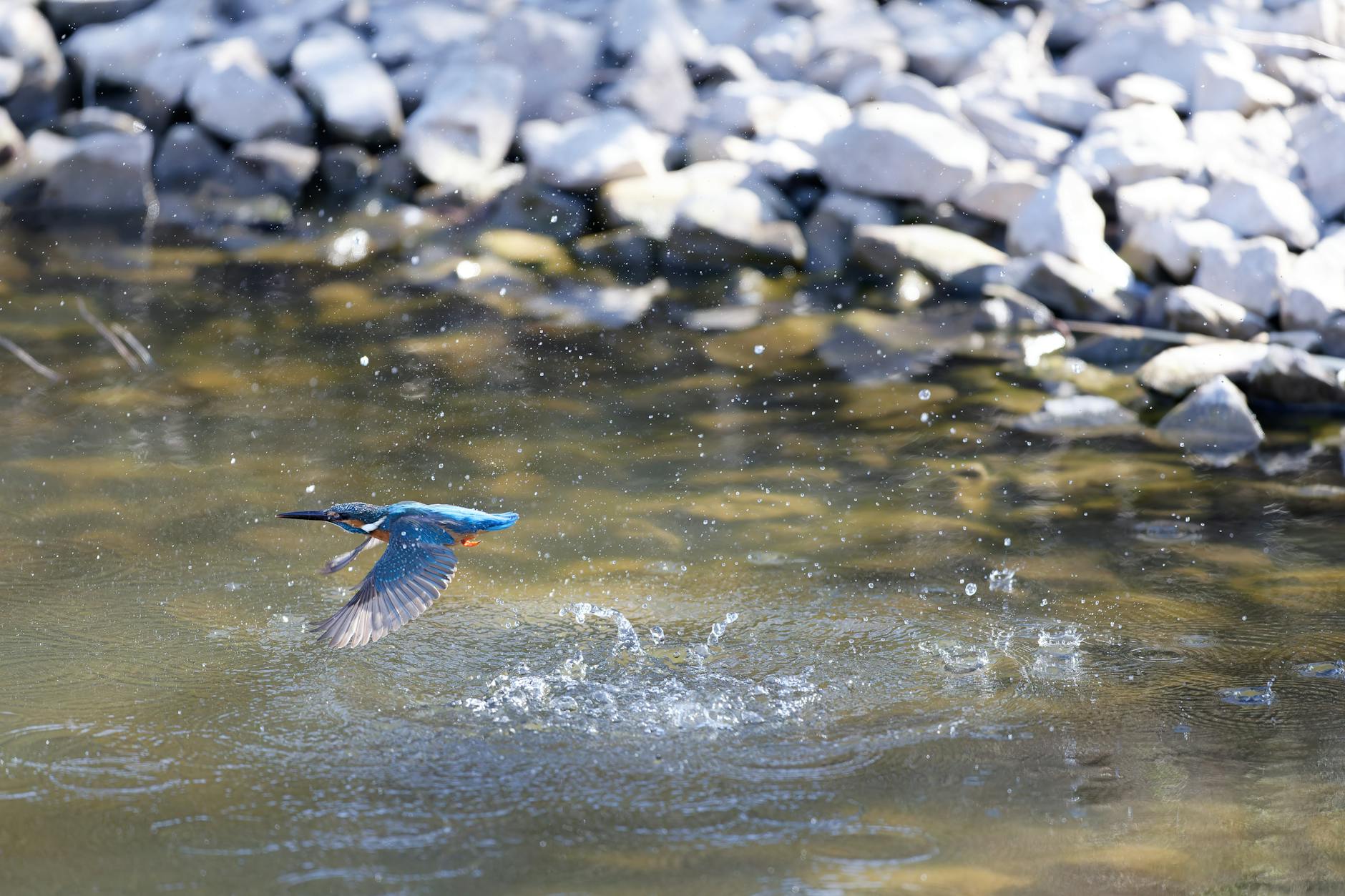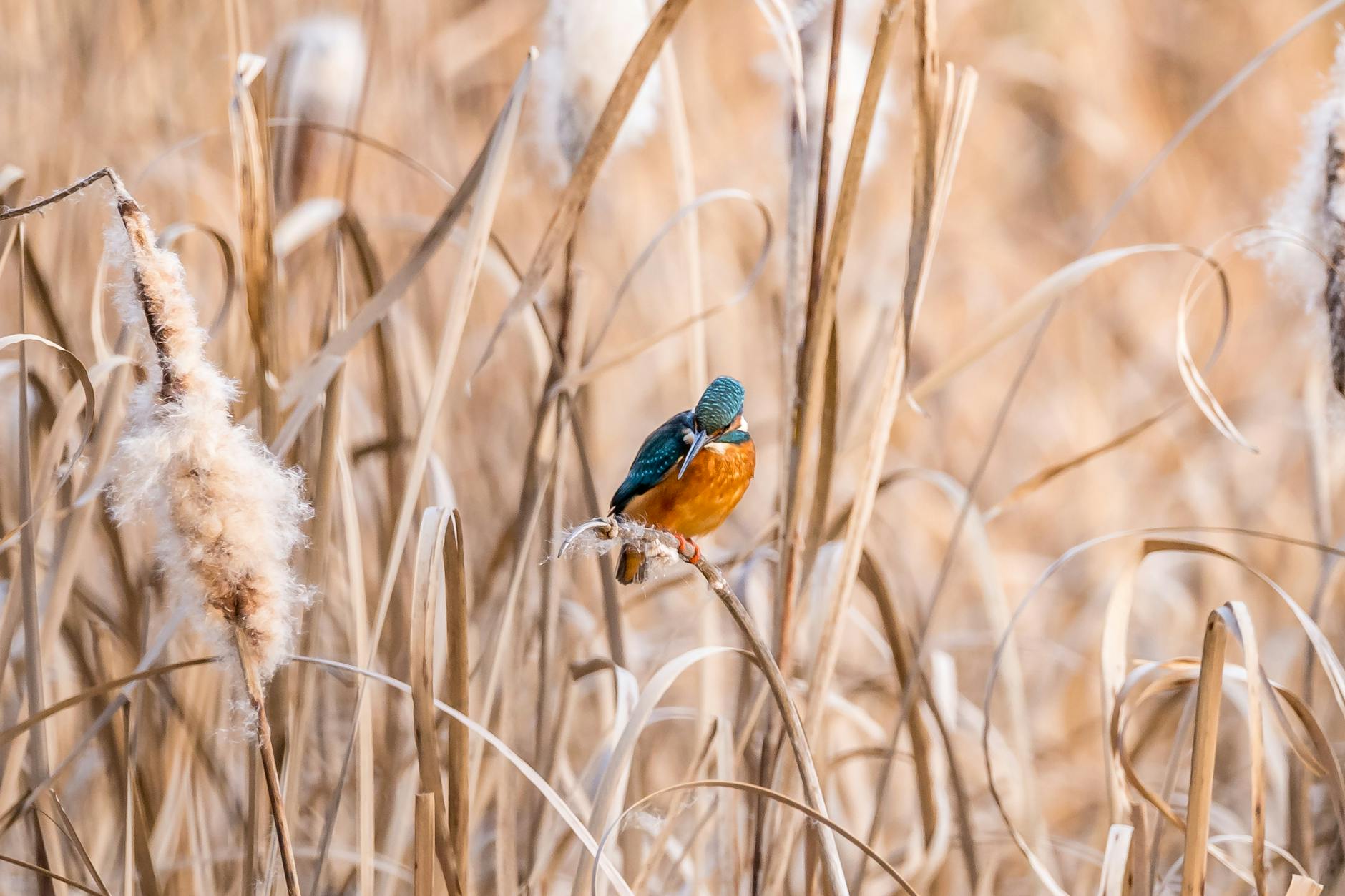Kingfisher Habitats: Where Do These Colourful Birds Live?
Kingfishers are striking birds found in various habitats across the globe, from tropical rainforests to the banks of streams and lakes. They thrive near water sources, where they can easily catch their favourite prey—fish and small invertebrates. These colourful birds adapt well to their environments, whether it’s a calm pond or a fast-flowing river.
In this post, we’ll explore the different habitats that kingfishers call home and discuss their importance in maintaining healthy ecosystems. By understanding where these beautiful birds live and how they function within their environments, we can appreciate the vital role they play in nature. Join us as we uncover the diverse worlds of kingfishers and learn how these remarkable creatures contribute to our planet’s biodiversity.
Global Distribution of Kingfishers
Kingfishers inhabit a wide variety of environments around the globe, primarily favouring areas close to water bodies. Their habitats can be broadly categorised into tropical regions and temperate zones, and understanding where these birds thrive helps illuminate their ecological significance.
Tropical Habitats
In tropical regions, kingfishers are often found near rivers, lakes, and coastal areas. These vivid birds thrive in places with abundant vegetation and water, which offer excellent hunting grounds.
- Africa: Kingfishers are widespread in sub-Saharan Africa, where they frequent lakes, rivers, and marshes. Species like the Malachite Kingfisher prefer shallow waters with overhanging vegetation, perfect for spotting prey.
- Asia: In Asia, kingfishers can be seen near paddy fields, mangroves, and forested riverbanks. The Common Kingfisher is prevalent here, often found by slow-moving streams and ponds. The lush habitats cater to their diet, which primarily consists of fish and aquatic invertebrates.
- Oceania: Australia and surrounding islands have several unique kingfisher species. The laughing kookaburra, known for its signature call, occupies various habitats — from woodlands to urban areas — proving their adaptability.
For more information on specific species and their habitats in tropical regions, check out this source on kingfisher habitats.
Temperate Zones
Kingfishers in temperate zones can be found in diverse environments, including clear streams, lakes, and forests. Their distribution here is affected by seasonal changes, influencing their breeding and feeding habits.
- North America: The Belted Kingfisher is commonly found in this region, residing near freshwater bodies. They dig nesting burrows in riverbanks and may migrate southwards during winter to avoid harsh conditions. (Learn more about the Belted Kingfisher’s range.)
- Europe: The Common Kingfisher is prevalent across Europe, preferring slow-flowing rivers and ponds with plenty of fish. Their nesting sites are often in bank sides, providing cover and access to water sources. Seasonal fluctuations in temperature encourage these birds to adapt their habits accordingly.
To explore more about temperate kingfishers, refer to this detailed overview.
Migration Patterns
While many kingfisher species are residents, some undertake impressive migrations to escape winter climates.
- Some populations, like the Belted Kingfisher, migrate to warmer regions, such as Mexico and Central America, during colder months. They often follow rivers and coastlines, which serve as natural highways for their journeys. (Find out more about the Belted Kingfisher’s migration.)
- Conversely, species in more stable climates may be less migratory, opting to remain in their territories year-round, adapting to seasonal changes.
Kingfisher migrations highlight their resilience and ability to navigate large distances. To delve deeper into their migratory patterns, check this source.

Photo by ao tak
Specific Habitats of Kingfishers
Kingfishers are intimately connected to water sources, relying on specific habitats that support their hunting and nesting behaviours. Each habitat offers unique advantages, allowing them to thrive in various ecosystems. Let’s explore the primary habitats in which these stunning birds are found.
Wetlands and Estuaries
Wetlands and estuaries serve as prime habitats for kingfishers. These environments are rich in biodiversity, providing ample food sources and nesting sites.
- Food Abundance: The shallow waters are loaded with fish, amphibians, and invertebrates. Kingfishers can easily spot their prey from perches along the water’s edge.
- Ideal Nesting Sites: Many species nest in banks along rivers or streams that border wetlands. The soft earth allows them to dig burrows, offering protection from predators and harsh weather.
- Environmental Role: Wetlands act as natural filters, improving water quality and supporting various life forms. Kingfishers contribute to this ecosystem by controlling fish populations, maintaining balance.
For more insights about kingfishers in wetland areas, you can visit Bird Watching on Kingfishers.

Photo by Kiril Gruev.
Rivers and Streams
Rivers and streams are essential habitats for many kingfisher species. The clear, flowing water is perfect for hunting, and these habitats provide some crucial benefits.
- Clean Water: Kingfishers prefer habitats with unpolluted, flowing water. This ensures a healthy food source and allows for easy hunting.
- Foraging Techniques: The birds often hunt by diving from branches or perches into the water. Their exceptional eyesight helps them spot fish from above.
- Nesting Opportunities: Kingfishers usually nest in burrows along riverbanks. The vertical banks provide easy access to the water and a safe environment for their young.
To read further about the life history of the Belted Kingfisher, check the detailed guide on Audubon.
Lakes and Ponds
Lakes and ponds offer a different yet equally important habitat for certain kingfisher species. These still water bodies host unique features that benefit these birds.
- Abundant Food Sources: Lakes and ponds are often filled with various fish and aquatic invertebrates. Kingfishers can hunt effectively in these environments, particularly in clear water.
- Calm Atmosphere: The stillness of ponds allows kingfishers to spot their prey without disturbances. They can perch quietly, observing the water below before taking a plunge.
- Nesting Sites: Some species will dig into the banks of lakes to create nesting burrows, offering protection and easy access to food.
For more information about the habitats of kingfishers around lakes and ponds, explore the insights on the Belted Kingfisher.
By recognising these specific habitats, we can better appreciate the ecological roles kingfishers play in maintaining balance within their environments. Understanding their preferences can also help in conservation efforts aimed at protecting these stunning birds and their habitats.
Adaptations to Their Habitats
Kingfishers are remarkable birds, highly adept at navigating and thriving in their varied environments. Their survival strategies are honed to fit specific habitats, showcasing their unique adaptations in both hunting and nesting behaviours.
Hunting Techniques
Kingfishers employ impressive hunting strategies to secure their meals. Their approach varies depending on the type of water body they inhabit, but certain techniques are common across species.
- Precision Diving: From a secure perch, a kingfisher can spot fish below the water’s surface. They use their sharp eyesight and swift movements to dive head-first, capturing prey with their powerful beaks. This technique is particularly effective in rivers and streams where the current might disturb fish. For a detailed look at how they execute this, read about the Fascinating Hunting Technique of the Belted Kingfisher.
- Wing Beats and Ambush: In some cases, kingfishers use rapid wing beats to maintain a hovering position, allowing them to survey the water without giving away their presence. This strategy keeps them unnoticed until the right moment to strike. An explanation of how they hunt can be found in this article on How do kingfishers hunt?.
- Specialised Anatomy: Their hunting success is also due to their anatomy. Kingfishers have streamlined bodies and long, pointed beaks. These features are essential for smooth dives and capturing fish underwater. Discover more about their unique adaptations in this piece on Adaptations for Fishing: Kingfishers’ Specialized Anatomy.

Photo by Erik Karits
Nesting Preferences
Nesting behaviours of kingfishers are closely tied to their habitats. These birds prefer nesting in locations that offer protection and accessibility to food sources.
- Burrowing: Most kingfishers create burrows in soft earth, often along riverbanks. These tunnels provide safety from predators while ensuring quick access to water. The nest chamber is typically wider and angled down to prevent eggs from rolling out. More about their nesting habits can be found in this guide on How does a kingfisher build its nest?.
- Environmental Needs: Good quality riparian habitats are crucial. Kingfishers require steep dirt banks for digging their nests. Changes in water levels or vegetation can significantly impact their nesting success. Discover the importance of these habitats in the Kingfishers | Game Commission.
- Adaptation to Conditions: During breeding seasons, kingfishers often choose sites with abundant aquatic prey. By understanding their nesting preferences, conservationists can better protect these essential habitats. For further insights, explore the Belted Kingfisher overview.
Through these adaptations, kingfishers manage to thrive in diverse habitats, transforming their environments into thriving ecosystems that benefit many other species.
Conservation and Habitat Protection
The survival of kingfishers heavily relies on the protection of their habitats. These birds often find themselves threatened by various human activities. Understanding these threats is essential for conserving kingfishers and ensuring their environments remain intact.
Threats to Their Habitats
Human actions have significant impacts on kingfisher habitats, endangering their populations. The following are major threats contributing to habitat degradation:
- Pollution: Water pollution from agricultural runoff, industrial waste, and litter harms the aquatic ecosystems kingfishers depend on. Contaminated water can lead to a decline in fish populations, reducing food availability for these birds. For more on this, visit the article on Long-term anthropogenic stressors cause declines in kingfisher habitats.
- Habitat Destruction: Urban development and land conversion for agriculture or infrastructure often lead to the loss of wetlands and riparian zones. Kingfishers rely on these areas for foraging and nesting. The Threats and Conservation Issues of Common Kingfisher report highlights the critical habitat loss affecting kingfishers’ survival rates.
- Climate Change: Changes in climate patterns affect water levels and the availability of habitats. Extreme weather events can exacerbate water pollution and further diminish the stability of kingfisher populations.
These threats underscore the urgent need for effective conservation measures to protect kingfisher habitats.
Conservation Efforts
Various initiatives are underway to protect kingfishers and their habitats. Here are some key conservation strategies being implemented:
- Habitat Restoration: Conservationists are working to restore degraded wetlands and riverbanks, essential for kingfisher populations. Restoration projects aim to re-establish native vegetation, improve water quality, and create suitable nesting sites.
- Pollution Control Measures: Efforts are being directed towards reducing water pollution. This includes regulating agrochemical usage and promoting sustainable farming practices. Resources like ABC Birds’ conservation initiatives provide insights into ongoing pollution control efforts that benefit kingfisher populations.
- Public Awareness Campaigns: Education programmes are designed to inform communities about the importance of preserving local ecosystems. Raising awareness can lead to greater community involvement in conservation efforts and promote behaviours that protect kingfisher habitats.
- Research and Monitoring: Ongoing studies focus on tracking kingfisher populations and assessing the effectiveness of conservation actions. Initiatives such as the Guam Kingfisher recovery programme work tirelessly to reintroduce endangered kingfisher species back into their natural habitats.
By supporting these conservation efforts, we can help ensure that kingfishers thrive in the wild. Taking action now is crucial for preserving these magnificent birds and the ecosystems they inhabit.

Photo by Jobbe Maes
Conclusion
Understanding kingfisher habitats is essential for preserving these vibrant birds and the ecosystems they inhabit.
Their reliance on healthy water bodies highlights the importance of clean environments for biodiversity. Protecting wetlands, rivers, and lakes directly impacts kingfisher populations and the diverse species that share these habitats.
Engaging in habitat conservation ensures future generations experience the beauty of these remarkable birds. Explore your local environments and support efforts to safeguard kingfisher habitats. How can you contribute to preserving these vital ecosystems?










